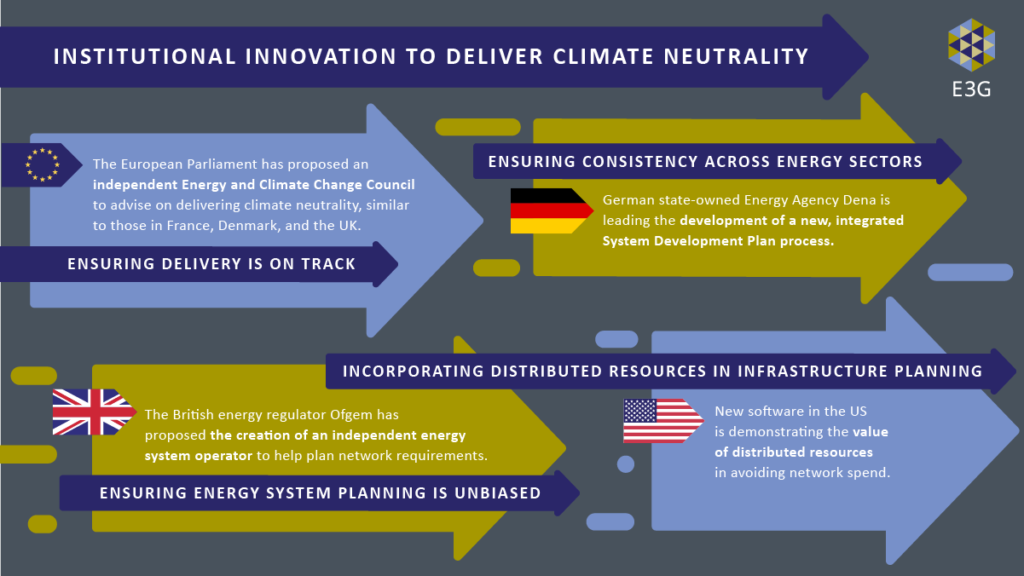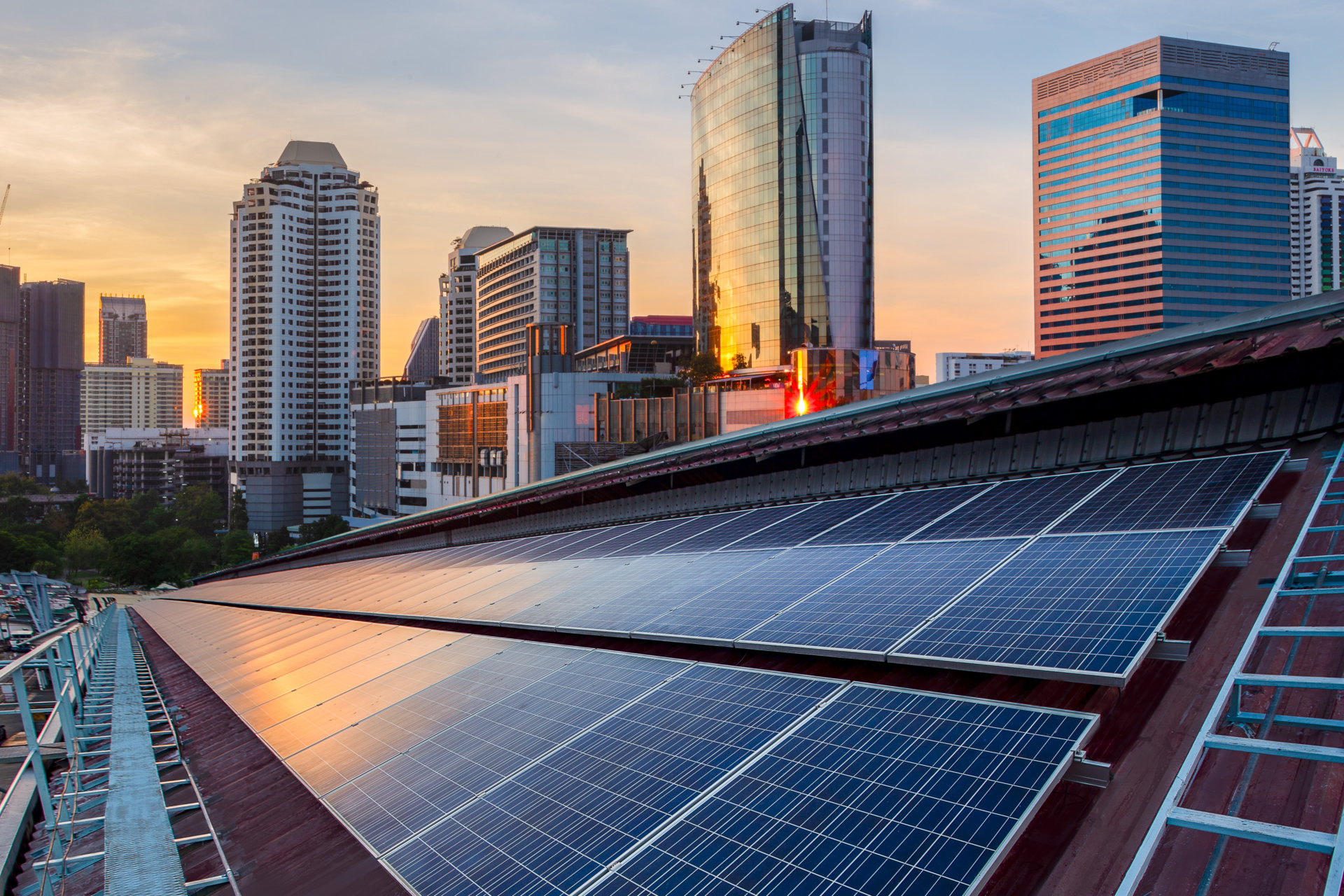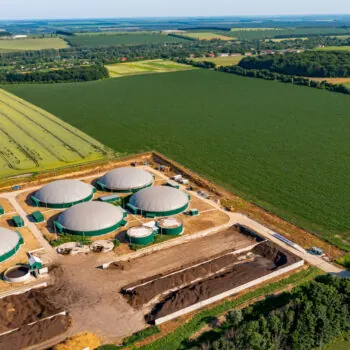Delivering climate neutrality and the European Green Deal represents a challenge unlike any previously faced by the EU. Incremental changes to current policies will not be enough to achieve current climate goals. Instead, we must embrace radical new approaches.
Transforming the energy system represents an early test for the EU. Up to now, citizens have been treated as passive energy consumers in a static energy system. Currently, each sector independently predicts future demand and plans infrastructure accordingly. This must now change.
Consumer choices and institutional approaches
We all have new choices about how to meet our energy needs that cut across traditional sectoral divides. For example, I could potentially heat my home with an electric heat pump, hydrogen produced from renewable electricity, or waste heat from a large biomass power plant. However, it is unlikely that I will ever be able to make this choice myself. My choices will be constrained by some authority who has determined the infrastructure connections to my home.
In most situations, it would be a waste of money for all these options to be made available. However, it is important that the infrastructure decisions determining the choices available to consumers are based on a fair comparison of the options. This should also allow for a good deal on cost, functionality, and the broader consumer experience.
Unfortunately, current institutions do not provide the necessary reassurance that this is the case. Gas networks are planned by gas network operators, power networks by power network operators and heat networks generally by local authorities.
There is little evidence that this infrastructure planning is co-ordinated or based on a rigorous interrogation of future risks and opportunities. Perhaps of greater concern is the inherent vested interests and the potential for bias – despite the oversight by national regulatory authorities. This threatens to leave many cost-effective pathways untapped.
Gas network companies are especially vulnerable to the transition to climate neutrality as sales of their core product, fossil gas, must rapidly decline and ultimately disappear. They must find a new purpose for gas infrastructure to survive. A big bet on hydrogen presents this possibility, even if future demand and supply are highly uncertain. Unfortunately, the latest proposals for revision to the trans-EU energy networks regulations (TEN-E) do not recognise this risk and the gas system operators (ENTSO-g) have sole mandate to plan hydrogen networks.
Fortunately, the need for a new institutional approach is beginning to be recognised across Europe and beyond. Policy makers are starting to question whether changes are needed in the way we forecast the future and take account of the evolving technology landscape. They are also asking how infrastructure should be planned and co-ordinated across sectors, between supply and demand, and geographically between EU, national and local levels. Finally, consideration is being given to what choices should be made available to energy consumers and how these choices should be presented. In other words, policy makers are beginning to ask ‘who decides’ the energy system landscape we are creating for future consumers.

The Climate Law and ECCC – science to ensure we are on track and manage risks
The need for institutional reform is already a live issue at the EU-level as the proposed European Climate Law enters the final stages of negotiations. The EU Parliament is proposing that the climate law require establishing independent expert advisory bodies at the EU and member state level.
The EU-level body, the European Climate Change Council (ECCC), would be able to advise EU lawmakers using the latest analysis on technology cost and deployment potentials to see whether the EU is on track for delivering climate neutrality and where options for policy improvements exist. A non-political and independent voice is likely to be invaluable to politicians looking to maintain public support for ambitious long-term climate policies. Importantly for energy system planning, such independent expert bodies have the potential to provide a new home for the task of defining assumptions about the future and methodologies for converting these assumptions into actionable infrastructure decisions.
New system development plan process in Germany – more integration
There are also signs that some member states are beginning to rethink infrastructure planning at the national level. In Germany, the state-owned Energy Agency ‘Dena’ is leading the development of a new “System Development Plan” process. The idea is to introduce a new stage to the energy infrastructure planning process in the form of a system-wide development plan that assesses implications across energy sectors for upcoming infrastructure needs. This would then feed into the planning processes for separate types of infrastructure, such as electricity and gas.
A final proposal on this is expected by the end of this year. Whilst initial findings have already been released, many critical questions remain unanswered, including the crucial aspect of who should lead this new process. It will be a test for the concept to ensure important activities are not captured by incumbent corporations with clear interests in preserving the status quo.
Regulatory innovation in the UK – independent and more integrated system planning and operation
Outside the EU, the UK has many of the same challenges to delivering climate neutrality, as it has a legally binding net-zero target by 2050. Energy regulator Ofgem recently recommended that a new independent energy system operator be established. Ofgem is not only calling for complete separation of the infrastructure planning processes from the transmission system owner National Grid, but also recommending that planning electricity and gas network infrastructure be co-ordinated under one roof.
Ofgem also recently commissioned a review of how infrastructure planning decisions are analysed. They concluded not only that current approaches are inadequate, but that these issues are too important to be left to the network operators. The UK government is currently reviewing these recommendations and it is likely that change is on the way.
Lessons from the US – independence as a driver for better valuing local resources
Elsewhere in the world, the explosion in the deployment of distributed renewable energy resources has highlighted the need for tighter integration between local and national infrastructure plans. In many US states, third parties can participate in the utility planning process. Armed with new and more sophisticated energy system models, there have been several cases where they have shown utility companies have not recognised the value of local system resources. Regulatory processes in the EU do not allow for independent interventions of this nature so alternative solutions will be required.
The case for institutional action to achieve climate neutrality is gaining momentum and it is increasingly difficult to argue the merits of the status quo. The EU decision on the need for the ECCC will be an important test, followed by an effective revision of infrastructure planning governance in the TEN-E energy regulation.
Next up will be the proposed ‘gas package’ of measures later this year. The EU cannot allow major decisions about the future of the gas network to be determined by gas network operators with vested interests in ‘high gas’ future scenarios. The gas package is a once in a decade opportunity to set the regulatory and market framework to put the EU on the path to delivering climate neutrality. It must not duck the central question: ‘who decides?’
Photo by funfunphoto on Adobe.


